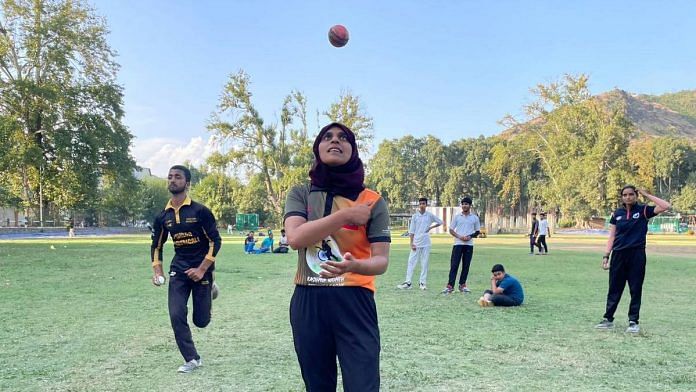Srinagar/Anantnag: A group of young women leaped with joy at Srinagar’s Sher-i-Kashmir cricket stadium, some sporting caps, others in hijabs. They all wore green and orange jerseys announcing that they were the Anantnag Rebels.
Their elation stemmed from their triumph in the Kashmir Valley’s first Women’s Cricket League (WCL) T20 tournament, organised by the Indian Army under its Sadbhavna (goodwill) Project in collaboration with the Jammu and Kashmir Cricket Association, in August.
“I was the woman of the match. My sixes went through the roof,” said 26-year-old Rubia Sayed, smiling from ear to ear, pointing upwards as she spoke to ThePrint earlier this month.
The WCL final drew an impressive crowd. Not only was the match held on a grand scale, it was the first time that women had played a tournament at Sher-i-Kashmir.
“Until four years ago, women were not even allowed to play at Sher-i-Kashmir,” said Abida Nazeer Khan, a certified professional women’s coach in J&K. “This was a personal achievement for women who would often be on the sidelines hooting for men and wishing to play at Sher-i-Kashmir stadium someday.”
Yet, while the journey of women cricketers in Kashmir has been rife with challenges, their struggle for recognition parallels the broader story of cricket, and sports in general, in the Valley.
In 1990, at the height of militancy, Sher-i-Kashmir, was shut down and occupied by the Central Reserve Police Force (CRPF) for nearly two decades.
Though the cricket stadium was reportedly made accessible to players in 1996, the venue remained more of a paramilitary base than a cricketing hub until 2007. The last time there was a one-day international match here was in the 1980s, and the last Ranji match played here was in 2018.
“Even the indoor stadium of Sher-i-Kashmir and Bakshi Stadium (used mainly for football) were occupied by the CRPF. They were cleared between 2016 and 2018, when the BJP-PDP government was in power,” said Waheed Para, secretary of the J&K Sports Council in the same period.
The overall sporting scene itself has a lot of catching up to do. The volatile security situation in Kashmir has meant that sports has taken a backseat, with players struggling for even basic facilities.
According to Para, sport was treated like a “counter-terrorism programme” by successive governments, but never taken seriously for its own sake.
“Leagues and matches are organised from time to time to engage youth as part of counter-insurgency plans, but there are no long-term plans, no infrastructure, and no process of nurturing talent,” Para said. “In the midst of this, real talent is lost.”
Nevertheless, for women cricketers, the WCL tournament was an important turning point, even if long-standing systemic issues remain.
Also Read: Kashmir cricket is 20 yrs behind, says Jasia Akhtar, Delhi Capitals’ pick for women IPL
‘Things have changed in past 2-3 years’
Kashmiri cricketer Jasia Akhtar famously defied poverty and militant threats to pursue her passion, but ultimately the lack of infrastructure in J&K forced her to relocate to Punjab around 10 years ago. This year, she became the first Kashmiri woman to be picked for the Women’s Premier League (WPL), playing for the Delhi Capitals.
Cut to 2023, and there’s another similarly inspiring story, but with a key difference. Anantnag’s Rubia Syed is expected to play for the Gujarat Giants in the forthcoming season of the WPL. But, unlike Akhtar, she didn’t have to leave J&K to chase her cricket dreams.
“To be honest, had Jasia Akhtar not moved to Punjab, she would not have reached WPL,” said coach Khan. “But in the past two or three years, the general perception of women’s cricket has changed.”
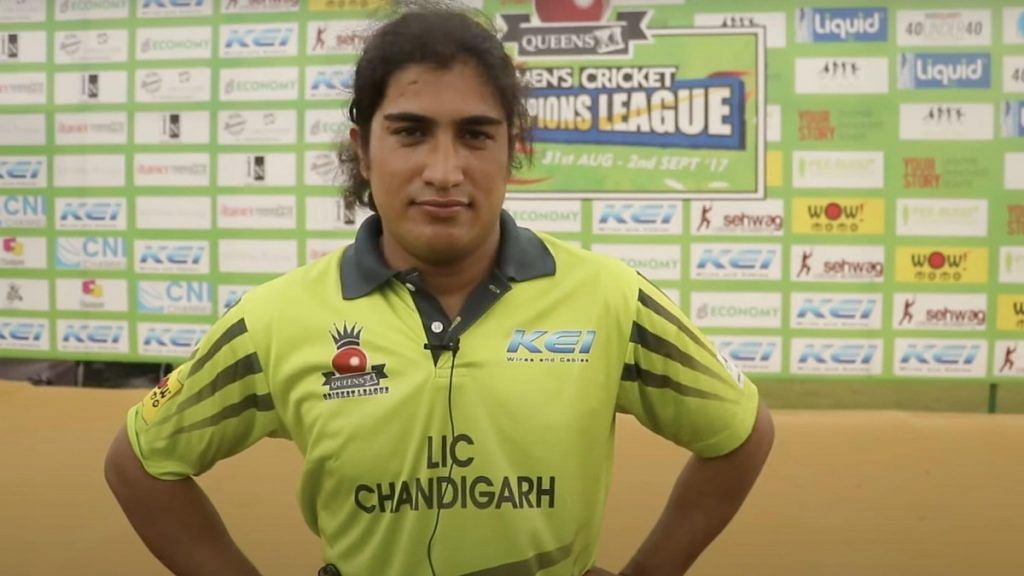
The 10-day WCL event in Srinagar, held from 19-26 August and featuring 12 teams from across Kashmir, signified the transformation taking place in women’s cricket, according to Khan.
“Women players had long awaited this opportunity. What stood out was that a national cricketing standard was maintained during the women’s league,” she added. “It gave players a sense of how the game is played in Delhi.”
There are also some other promising signs for the future of sports, with Jammu and Kashmir Lieutenant Governor Manoj Sinha announcing a budget of Rs 145 crore to augment sports in the Union territory. “Jammu and Kashmir is becoming a powerhouse in the sports sector,” he said.
In the case of cricket, too, the Jammu and Kashmir Cricket Association (JKCA) has been on a drive to improve infrastructure and nurture talent, including women.
A search for stars, focus on women
On a bright September afternoon, a file of girls, some as young as 11, carried hefty backpacks down the path leading to the JKCA stadium in Srinagar.
Some were coming straight from school, with their parents accompanying them, ready for a practice session: warm-up routines, drills, and hours of batting and bowling.
From the huge window of the cricket body’s office nearby, JKCA in-charge Majid Dar, closely observed the proceedings.
After a few minutes of watching, he came down, instructing the girls to straighten up and perfect their postures. Dar wielded a cricket bat, demonstrating the correct movements as the girls followed suit.
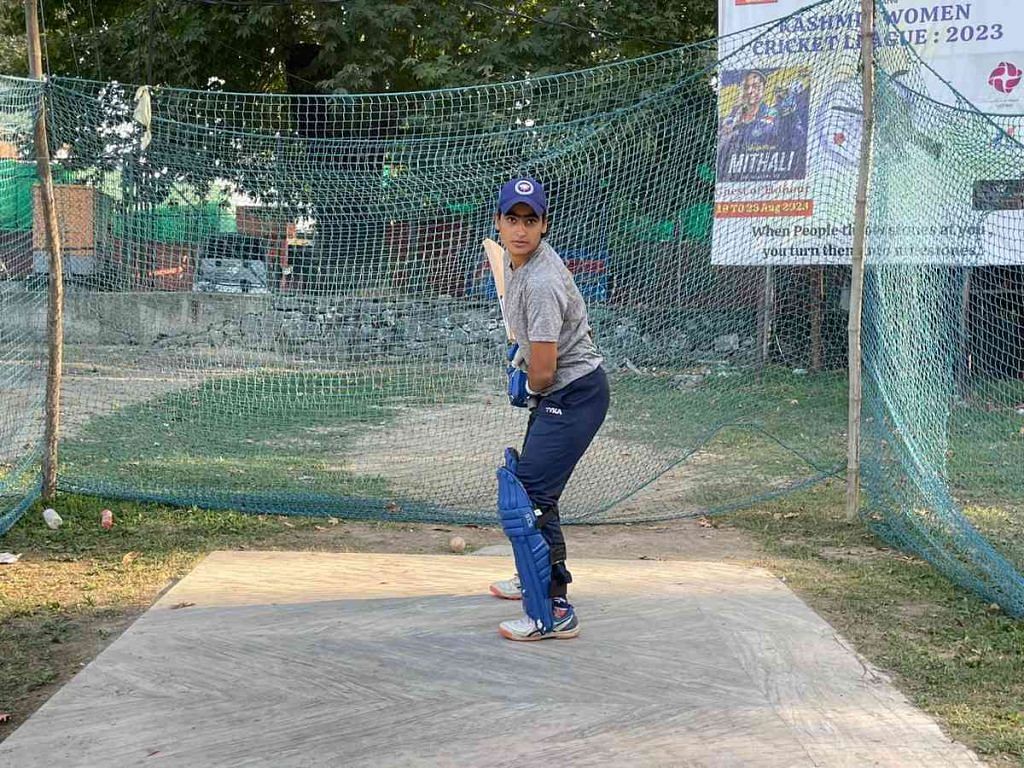
He then went one by one and fixed their shoulders. “This is how it should be done,” he exclaimed.
Dar, a 43-year-old former Ranji player and coach from Srinagar, was assigned the daunting task of revitalising the JKCA two years ago.
The dilapidated practice nets were refurbished, and new bats, helmets, balls were procured, and a talent hunt was organised across Kashmir for women players.
“When I took charge of JKCA, what struck me was that there were no women players in the stadium. It was all men. That’s when we sent a notification regarding a talent hunt across all districts of Kashmir to attract women players,” he told ThePrint.
Initially, only two women responded. “I, then, went ahead and tried to talk to the parents of these players. I took them into confidence and explained the process. Today, around 30 women players from far and wide come to the stadium every day to practice here,” Dar claimed.
One of these women is Budgam’s Saba Jan, 22. “What a ball! What a ball!” she shouted, catching the leather cork ball with ease.
Every day, Saba travels two hours each way on her two-wheeler to keep up with her practice. When she reaches the stadium, she swaps her abaya for a sports uniform and takes to the field.
Saba is the only player from Budgam district. She learned about the JKCA trials last year and there has been no looking back. In the WCL tournament, she was part of the Budgam Strikers team, which finished as the runners-up.
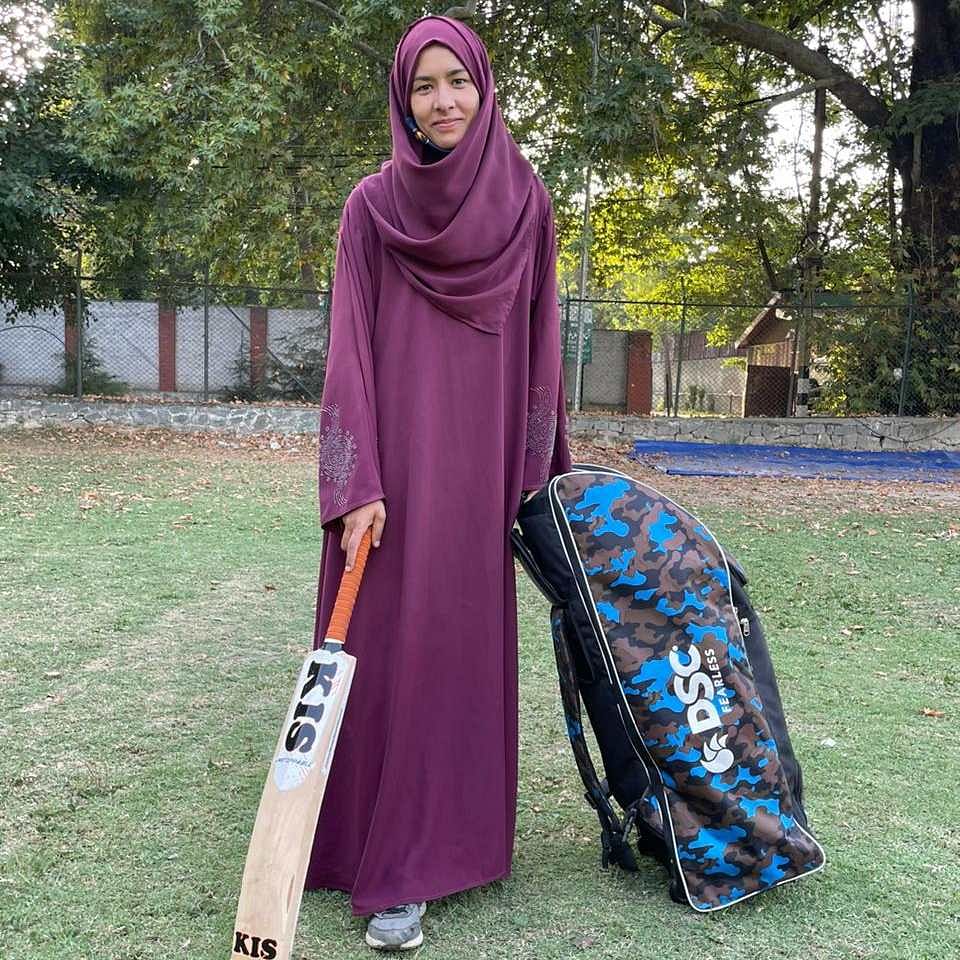
“It took me some time to convince my parents but now they encourage me to practice cricket. Back in Budgam, not many knew that I played cricket until they saw me playing women’s league in Srinagar. Now, they are a fan of my bowling,” she laughed, adjusting her abaya as she prepared to head home.
Yet, despite their efforts to rekindle cricket in the region, whether for men or women, the JKCA is still dealing with the lingering effects of its troubled past, including reverberations from a major corruption case. This, coupled with the tenuous security situation in Kashmir, has made it challenging to create a thriving cricketing landscape in the region.
‘Cricket scene is yet to be sorted’
Over the decades, militancy and security concerns have disrupted the growth of cricket, and sports at large in J&K. The security situation is unpredictable, with factors such as sporadic curfews and shutdowns making it difficult to organise big matches, and for players to attend regular practice.
There have been reports of players receiving threats for playing for India, and there have been chronic issues with a lack of infrastructure. Over the decades, several promising cricketers even relocated to other parts of the country, seeing little hope in J&K. Examples include Jasiya Akhtar and Mithun Manhas, who became the first player from J&K to play in the IPL.
The JKCA, too, has for long been at the centre of various controversies. The most serious of these was in 2012, when a storm of corruption allegations rocked the cricket body, involving the alleged misappropriation of over Rs 40 crore under the guise of “promoting the game”. At the time, former Chief Minister Farooq Abdullah was the president of the cricketing body, a position he had held since 2001.
The allegations triggered a large-scale probe involving the Central Bureau of Investigation (CBI) as well as the Enforcement Directorate (ED),
It was alleged that Ahsan Ahmed Mirza, JKCA treasurer between 2005 and 2011, and then-general secretary Saleem Khan had diverted funds from the Board of Cricket Control in India (BCCI) to fictitious accounts under JKCA’s name.
In 2020, the ED attached assets worth Rs 21 crore in connection with the alleged scam. Of these, Rs 11.86 crore of assets belonged to former CM Abdullah. The investigations in this money laundering case are still ongoing, and Abdullah was granted bail in August of last year.
“The JKCA is riddled with politics. For the longest time, the money was diverted for personal gains and to run political parties. As a result, the players suffered. Who goes for IPL and who doesn’t is also decided by the politics in the region,” alleged a source closely associated with the Sports Council of Jammu & Kashmir.
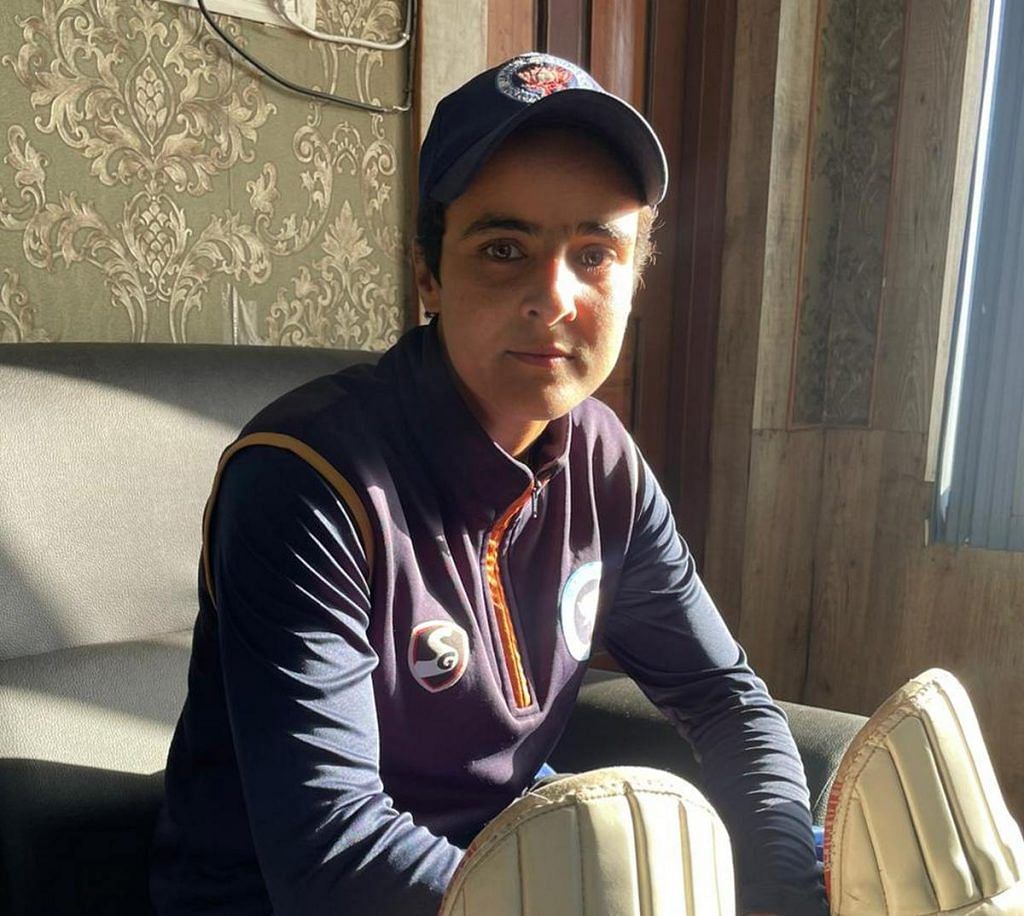
Abid Nabi, the coach of the men’s cricket team, vividly recalls the dismal state of affairs four to five years ago — no turf wickets, no proper nets, and an acute shortage of coaches.
Then, in 2021, the J&K High Court handed over the reins of the JKCA to the BCCI, which appointed a three-member subcommittee to oversee cricket in the Union territory. This committee comprises former cricketer Mithun Manhas, Brigadier (Retd) Anil Gupta, and advocate Sunil Sethi. Notably, all are originally from Jammu and both Sethi and Gupta are BJP spokespersons. J&K cricketer Majid Dar works as an in-charge under this sub-committee.
Since then, said Nabi, cricketing facilities have improved, but some fundamental problems have remained.
“Now, there are 80 percent facilities but the cricket scene is yet to be sorted. The JKCA still keeps seeing controversies. It is taken over by a sub-committee appointed by BCCI, which appears to be politically motivated. And there are no elections for the JKCA clubs,” he said.
Change slower for women
At Mehndi Kadal Stadium in Anantnag, a group of determined women cricket players await the arrival of Nuzhat Gull, the J&K Sports Council secretary. Their longstanding request for a changing room at the stadium, a basic necessity, seems to have gone unheard, they said.
“Whenever we come here, we request the stadium manager to go outside so that we can change in his office. Such is the situation,” said cricketer Sapna Iqbal, a 22-year-old all-rounder with the Anantnag Rebels.
The women believe that the lack of facilities is a deterrent, but they have other grievances too.
Iqbal pointed out that the prize money for women’s tournaments is significantly lower than that for men. If men win Rs 2 to 3 lakh, the women’s team gets Rs 50,000, she claimed. The money then has to be divided between 12 players.
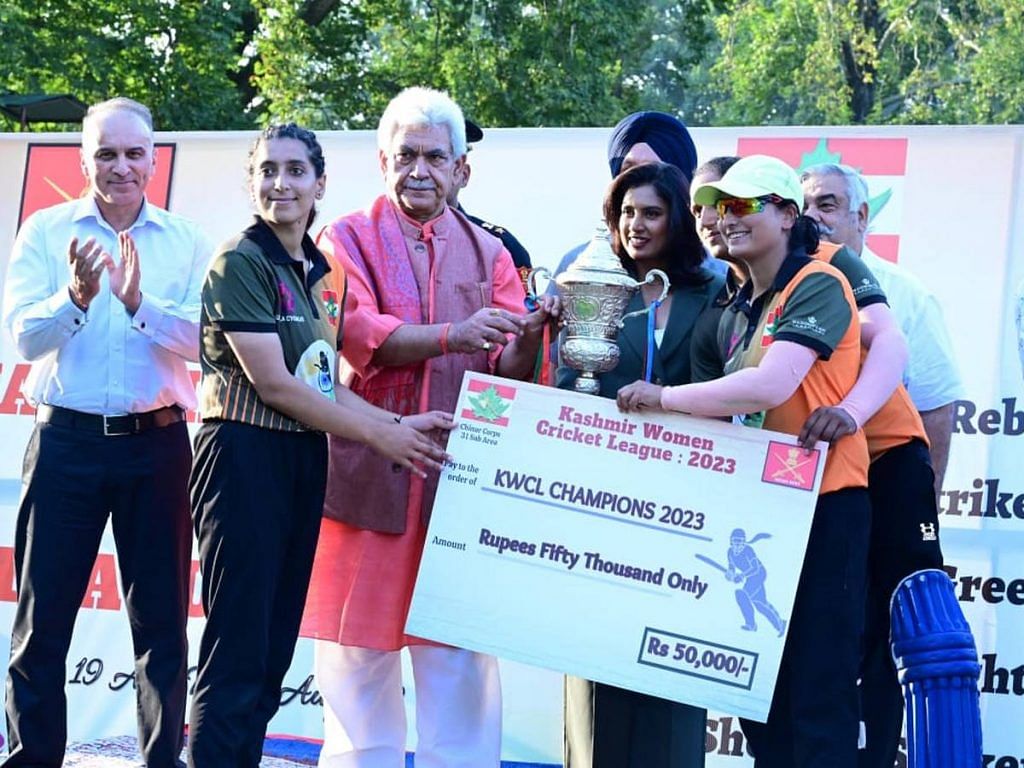
Financial constraints compel many women players to rely on their parents and travel expenses are difficult to cover. As a result, many talented players quit the sport.
On top of this, in a region where heavy snowfall blocks roads and highways for six months, there isn’t a single indoor cricket stadium. Players have to travel to Jammu to continue playing during winter, which is not feasible for everyone.
“We need indoor stadiums because moving to Jammu in winter is difficult. Some can manage it, but others cannot. In a place like J&K, abundant in talent, an indoor cricket stadium is a necessity,” Iqbal said.
Societal gender biases are a whole other problem. On social media, videos of women playing cricket are frequently met with negative comments, affecting their morale.
“In Srinagar, a woman playing cricket may be celebrated with cheers but in villages, such a feat will still raise eyebrows,” Iqbal said.
But coach Abida Nazeer says change is happening, even if slowly. She recalls a time when women were informed of matches only a few days in advance, without any training or preparation.
“Time and attention were not given to women’s cricket. There would be no fitness or skill camps. You would get a call five days before the match. Women had no kits, no practice. Many good players would opt out because of that,” she recounted.
“But now, the JKCA is arranging kits for financially weak families. These changes have taken place on the grassroot level. Now, people are getting to know the women players here,” she added.
A boost from the Army
During the course of the Women’s Cricket League in Srinagar, the players were given rather unique accommodation: camps inside the Badami Bagh cantonment.
This arrangement was the brainchild of Colonel Manoj Dobriyal, the Army officer who pushed to organise an exclusive sports event for women after Rubia Syed and other players approached him with the idea. But even after the plan fell in place, some players had trepidations.
“The girls were initially hesitant, but over time, I saw them opening up. On the first day, no one would shake hands with me at the start of the match. On the third day, it was a different scene. These women were from far-flung villages, many of them had come to Srinagar for the first time,” said Dobriyal, brimming with enthusiasm.
For these players from distant Kashmiri villages, Srinagar is like Delhi, offering malls, a recently opened theatre, large restaurants, playgrounds, and stadiums.
A day before the tournament, the players were treated to the movie Ghoomer, centred on the life of a woman cricket player.
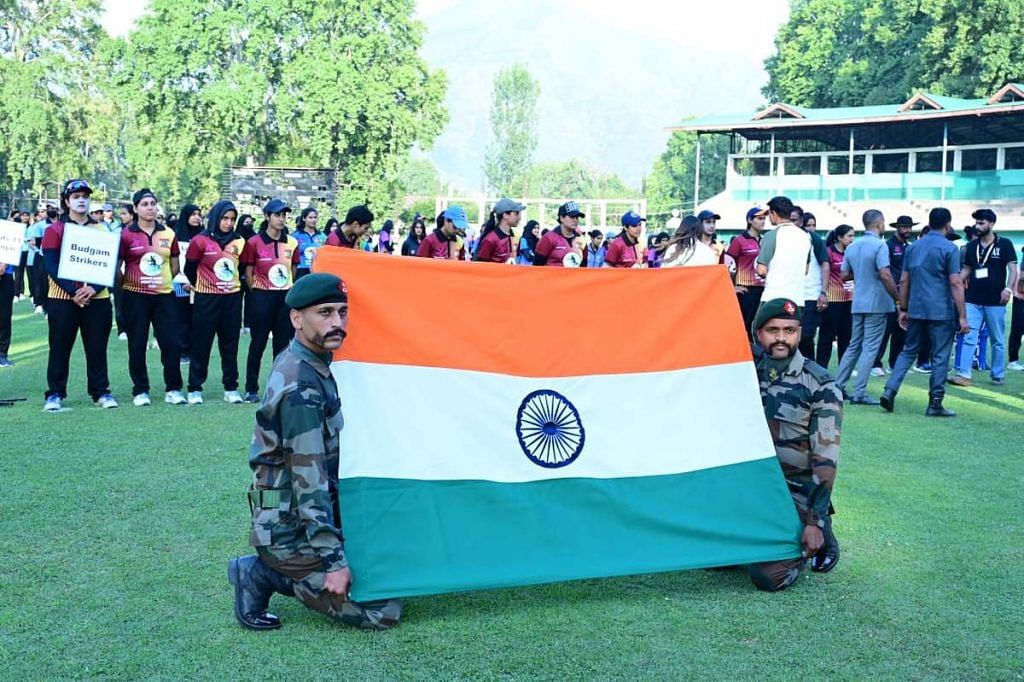
“For 90 percent of these girls, it was the first time they were watching a movie on the big screen. After the movie, they started crying,” Dobriyal said.
Notably, the Army organised the event under “Operation Sadbhavna”, conceived in the 90s during the peak of militancy. Under Sadbhavna, the army connects with the masses by organising events, tournaments, and other youth-centric initiatives.
One of the Army’s advertisements for the women’s cricket league described the tournament as an act of “empowering” young female players. For the players, it was a platform to showcase their skills and passion for the game.
A high point of the event was the presence of former national women’s cricket captain Mithali Raj, who presented the trophy to the winning team and interacted with them over tea along with LG Manoj Sinha.
Waheed Para, however, was sceptical. “They (governments/administrations) use youth for a specific event and then throw them away,” he claimed.
But for all-rounder Rubia Syed, the tournament is far from the end of the road. Having already showcased her skills in prestigious tournaments like the Ranji Trophy, she has now reportedly earned a place in the Gujarat Giants for the upcoming WPL season.
Secret courtyard games to WPL
A farmer’s daughter, Rubia Syed lives in Badasgam, a small village 13 kilometres from Anantnag town in Kashmir.
Till a few years ago, she was the sole player from the district, but now there are 20 others like her. Syed went house to house to convince parents to let their daughters participate in the league.
In Badasgam, girls proudly call her “the cricket didi”. But her journey was a hard one. Her mother recalls how Syed would choose cricket balls over toys or chips as a child and then play cricket using a large wooden stick.
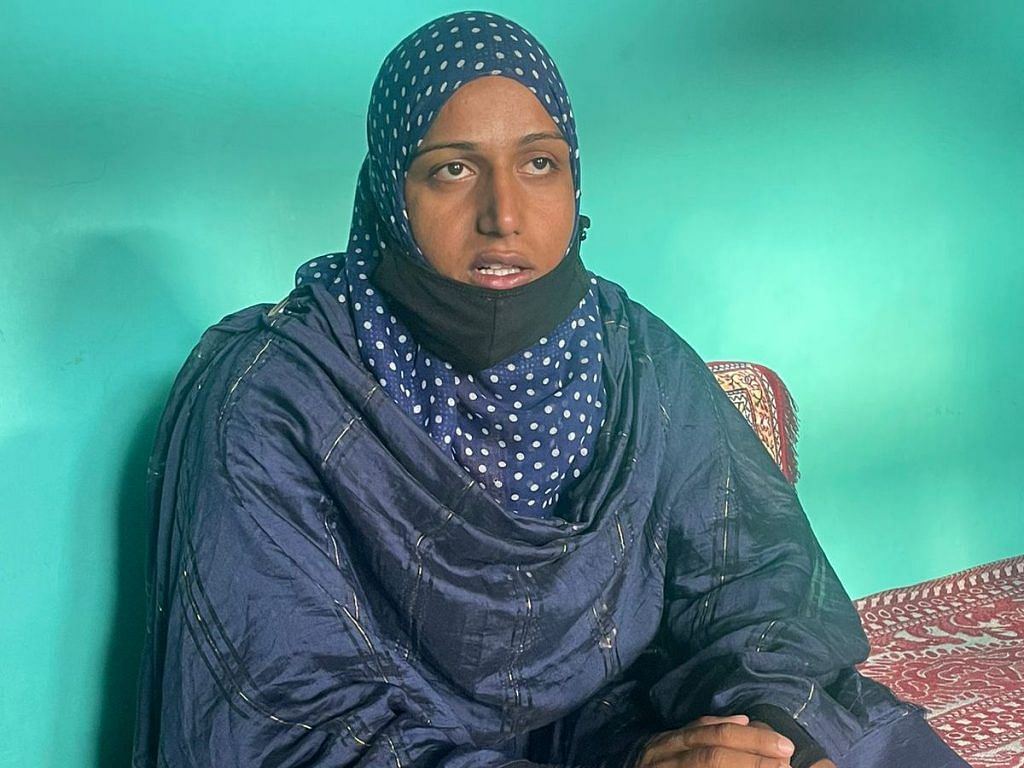
Back then, women who played cricket faced social stigma, prompting Syed to discreetly hone her skills in the courtyard of her house. She would hit a plastic ball against a wall, copying moves learnt secretly by watching boys play gully cricket.
Now, Syed hopes to one day play for the Indian women’s cricket team.
“In the past 20 years, all I have wanted to do is to change the perceptions of society and to show them that women, too, can play cricket. Watching other women come from Anantnag to play cricket makes me feel like I have somehow succeeded,” she said, standing beneath the apple tree in her courtyard.
Dar is proud of her. She runs faster than any male cricketer in the field, he said.
Last year, in a J&K vs Puducherry match, then women’s cricket team captain Mithali Raj made her entire team watch Rubia Syed bat. “It was a big deal for me. It gave me confidence to do better,” Syed said.
She isn’t the only woman cricketer who dreams big. Despite all the challenges she continues to face, Sapna Iqbal, an ardent Virat Kohli fan, also hopes to make a name for herself
“I have written hundreds of messages to Virat Kohli on Instagram. I met Mithali Raj,” she said. “Now, I want to meet Virat Kohli once. I watch all the India vs Pakistan matches for Kohli.”
(Edited by Asavari Singh)
Also Read: A lot is riding on Women’s Premier League. Don’t compare it with IPL


